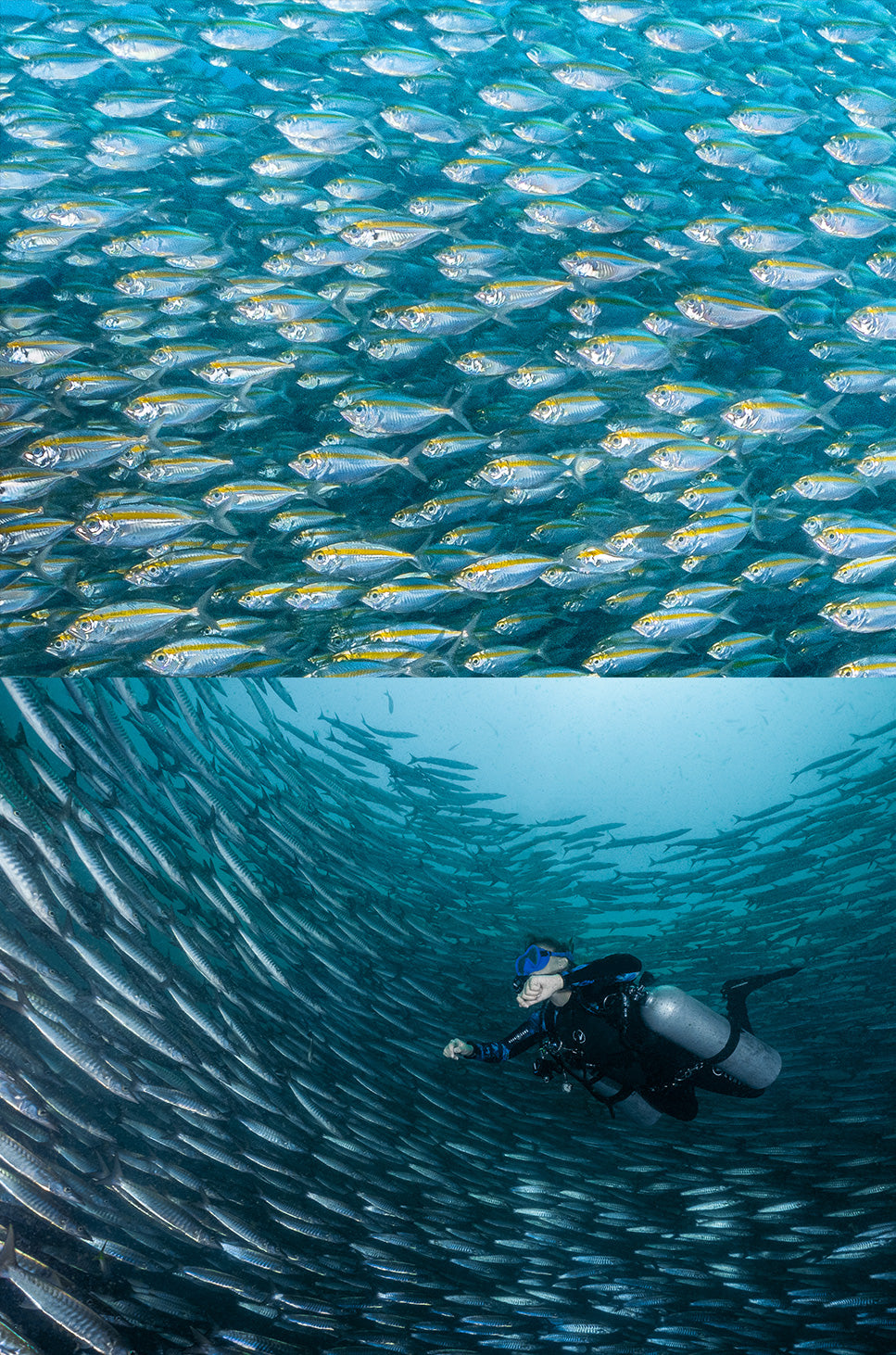
Higher Trophic Predatory Fish Research
Higher trophic predatory fish are often found in deeper waters, offshore from shallow reefs. Aggregations of these predatory fish are common around deep isolated pinnacles, where predation, cleaning, and mate acquisition are often most successful. The resulting biodiversity and sheer abundance of marine life that therefore exists around these pinnacles, naturally creates diving 'hotspots' of biodiversity.
Occupying a higher position in the food web, the predatory roles of these fish are essential for maintaining biodiversity amongst communities of organisms lower down the web, allowing co-existence of competing organisms. Predation is also key to ensure that no single species dominates the reef by outcompeting other species, which would have significant knock-on effects to overall biodiversity and ecosystem resilience.
Global Reef has established a long-term monitoring program, identifying population trends amongst several data deficient, and vulnerable, predatory fish species. This information may be significant in defining sustainable fishing practices and highlighting essential management interventions or guiding policy decisions in the region.
During COVID 19, Koh Tao saw a rapid and significant decline in the volume and frequency of divers visiting offshore isolated pinnacles – the first time anything of this nature had occurred since dive tourism began to thrive, more than 20 years ago. Global Reef has combined data collected pre-, during-, and post pandemic, which has provided a unique insight into the relative impact that various different resource users and stakeholders may have on isolated pinnacles and higher trophic predatory fish. Findings from such a rare and unique research opportunity may be of significant importance when making policy changes in relation to resource users


Investigating Thermal Tolerance in Corals
Coral bleaching events in the Gulf of Thailand during 2024 have revealed surprising optimism, with resilience in coral colonies situated in extremely shallow waters (approximately 1-2m depth), where sea temperatures consistently exceed traditional bleaching thresholds and reaching as high as 35 degrees. Remarkably, these corals showed minimal to no signs of bleaching, suggesting potential adaptations, thermal plasticity, or other resilience mechanisms.
To investigate this further, Global Reef researchers have transplanted hundreds of coral fragments collected from populations found in these high temperature areas, as well as from deeper waters (where conspecifics were also found naturally). The team have monitored and compared critical parameters such as survival rates, growth rates, occurrence of bleaching events, and recovery rates between the two populations. This comparative analysis aims to determine if shallow water coral fragments exhibit
enhanced thermal tolerance through either genetic adaptation or phenotypic plasticity.
Additionally, our research team is collaborating with regional partners to examine coral recruits, exploring generational effects, adaptive resilience through natural selection, and potential plasticity compared to older, larger coral colonies. Findings from both studies will significantly inform future coral restoration strategies, ensuring potentially more resilient corals are selected for restoration efforts amid
ongoing climate change.


Artificial Reef & Wreck Research
Wrecks and other types of artificial reefs create habitable spaces for marine organisms, as well as offering a place for coral and other benthic organisms to recruit. As life begins to inhabit and aggregate around artificial reefs, this attracts divers - often relieving pressure on nearby natural reefs.
As natural reefs become increasingly threatened by global stressors, artificial reefs may play a key role in providing refuge sites for a diverse range of reef-associated organisms, spanning the entire food-web. Wrecks are common aggregation sites for predatory fish species, many of which are commercially valuable. Most recently, the team has published a significant manuscript which reveals the importance of shipwreck environments in supporting higher trophic fish species, and the likeness of these artificial reef sites to isolated rocky pinnacles; known biodiversity hotspots. The habitats that wrecks and artificial reefs provide to marine life could be important, as the world continues to tackle the global issues threatening natural reefs. (Taylor et al., 2025)
Having already established the potential for artificial reef environments as effective fisheries management tools (as published by Baillie et al., 2024), Global Reef is working to identify the relative importance and impact of artificial reef structures that are deployed in the region, as well as investigating what makes them successful. This research could be of significant value in the design and development of future
artificial reefs that aim to provide habitats or refuge sites to threatened marine organisms.
With two new deployments of shipwrecks in 2023, the Global Reef has a fantastic opportunity to investigate the ecological functionality of these deployments and are currently working on a significant manuscript looking into the role of shipwrecks in fish attraction, and wider fish production. The team continues to be at the forefront of research in the space of artificial reef environments in the region and contribute valuable evidence that will go towards management bodies to guide new deployments, as well as monitor the ecological impacts of previous ones.

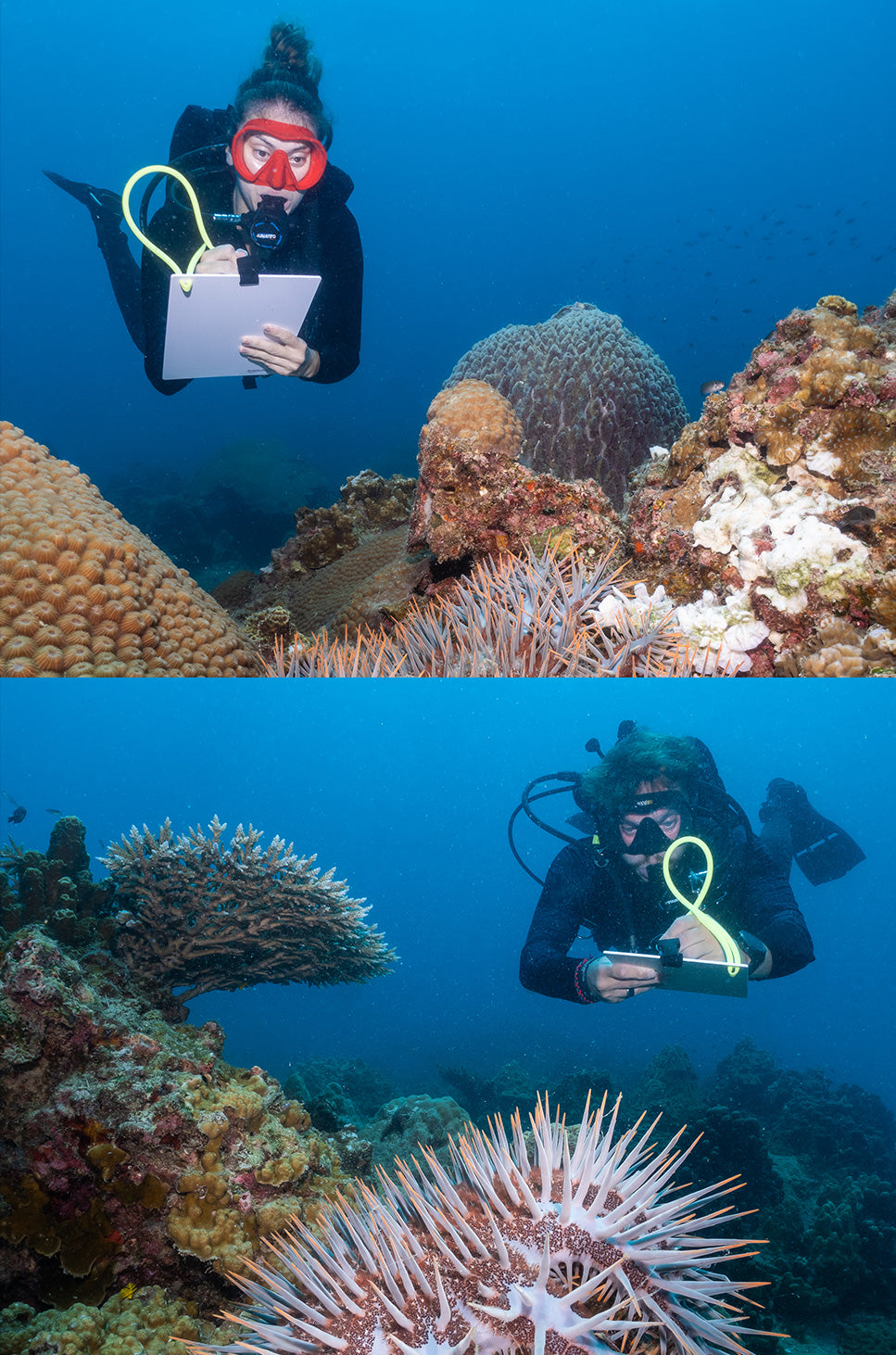
Crown of Thorns Population Studies
Crown-of-thorns starfish or CoTS (Acanthaster sp.) consume live coral polyps during their adult stages and, at sustainable densities, play a crucial role in maintaining hard coral diversity and overall reef health. By preying on established colonies, CoTS free up space for larval settlement of new corals, supporting genetic diversity and contributing to long-term reef resilience. However, when COTS densities exceed critical thresholds—often associated to overfishing or elevated nutrient loads—they pose a severe threat to reef environments. Such outbreaks can lead to sustained population booms and mass coral mortality approaching 80%, driving large-scale reef degradation and the loss of essential habitat for a host of associated species.
Over the past three years, Global Reef researchers have monitored high-density COTS sites to track temporal trends in abundance, dietary ecology, and ecosystem effects. This work includes a published study on dietary preferences in the Gulf of Thailand (Miller et al., 2024) and several ongoing manuscripts examining their impacts on fish assemblages, benthic composition, and coral recruitment. Due to be published in 2026, this research is helping to clarify regional ecological dynamics and inform local carrying capacities for corallivorous species in Thailand, ultimately improving evidence based management and coral reef conservation.
Future interns will contribute to long term datasets essential for quantifying how varying COTS densities influence reef health and for identifying areas at risk of future outbreaks, engaging in a range of survey methods that are essential to Global Reefs ongoing work.

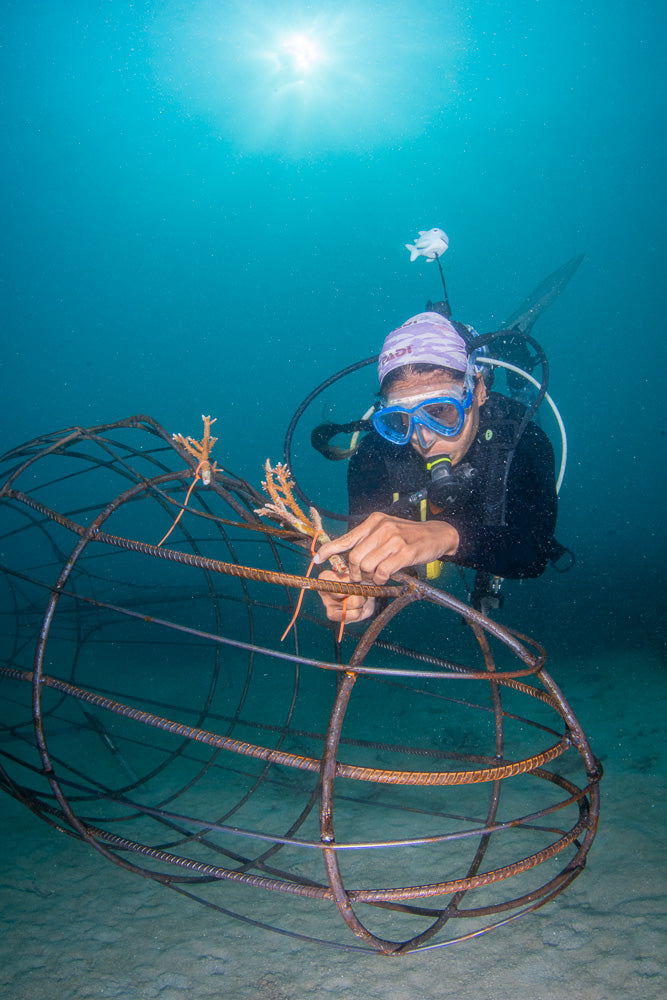
Coral Restoration
Coral reefs occupy less than 0.1% of the ocean, yet provide habitats to over a quarter of all marine organisms. Corals are one of the most important organisms in supporting the high level of biodiversity found on reefs. Hard corals play an unparalleled role in providing habitats to a number of reef associated organisms, and in doing so, structure entire ecosystems.
Global Reef is actively involved in the restoration of coral reefs around Koh Tao. Artificial reefs constructed using concrete, metal or limestone may be deployed in areas that lack stable reef substrates. These artificial structures provide a stable substrate for corals to be transplanted onto, allowing them to develop into new colonies.
Working in collaboration with the Thai Department of Marine & Coastal Resources, these projects contribute to the large scale, island-wide restoration and protection of Koh Tao's reef ecosystems. Interns engage in coral restoration activities every week; receiving restoration training, planting, monitoring, maintaining existing structures, and deploying new substrate for the future. Not only do interns get the opportunity to be a part of this project every week, but it is also coupled with regular scientific surveys aimed at investigating the effectiveness of different restoration methods, as well as the impacts on the local reef ecosystem.
To date, Global Reef have deployed over 30 restoration structures, and transplanted over 14,000 coral colonies that otherwise would likely have died from mechanical damage and other stress. Active restoration efforts such as this have a profound impact on local reef ecosystems, and the team have observed large diversity of fish species inhabit the restoration site, as well as significant increases in overall coral coverage and observed symbiotic invertebrate species.
Not only is the success of coral restoration tangible in the ocean, but this project has large ramifications in raising awareness of coral conservation with the next generation of biologists and ocean stewards. Almost all our restoration structures are designed and sponsored by young minds from partnering schools around the world, and the engagement into conservation continues after deployment as they are shared updates of the coral growth and even shown their structures in Virtual Reality!
Global Reef’s restoration projects in collaboration with the Department of Marine and Coastal Resources continues to expand rapidly, on what is becoming recognised as one of the most ambitious restoration projects in Thailand.

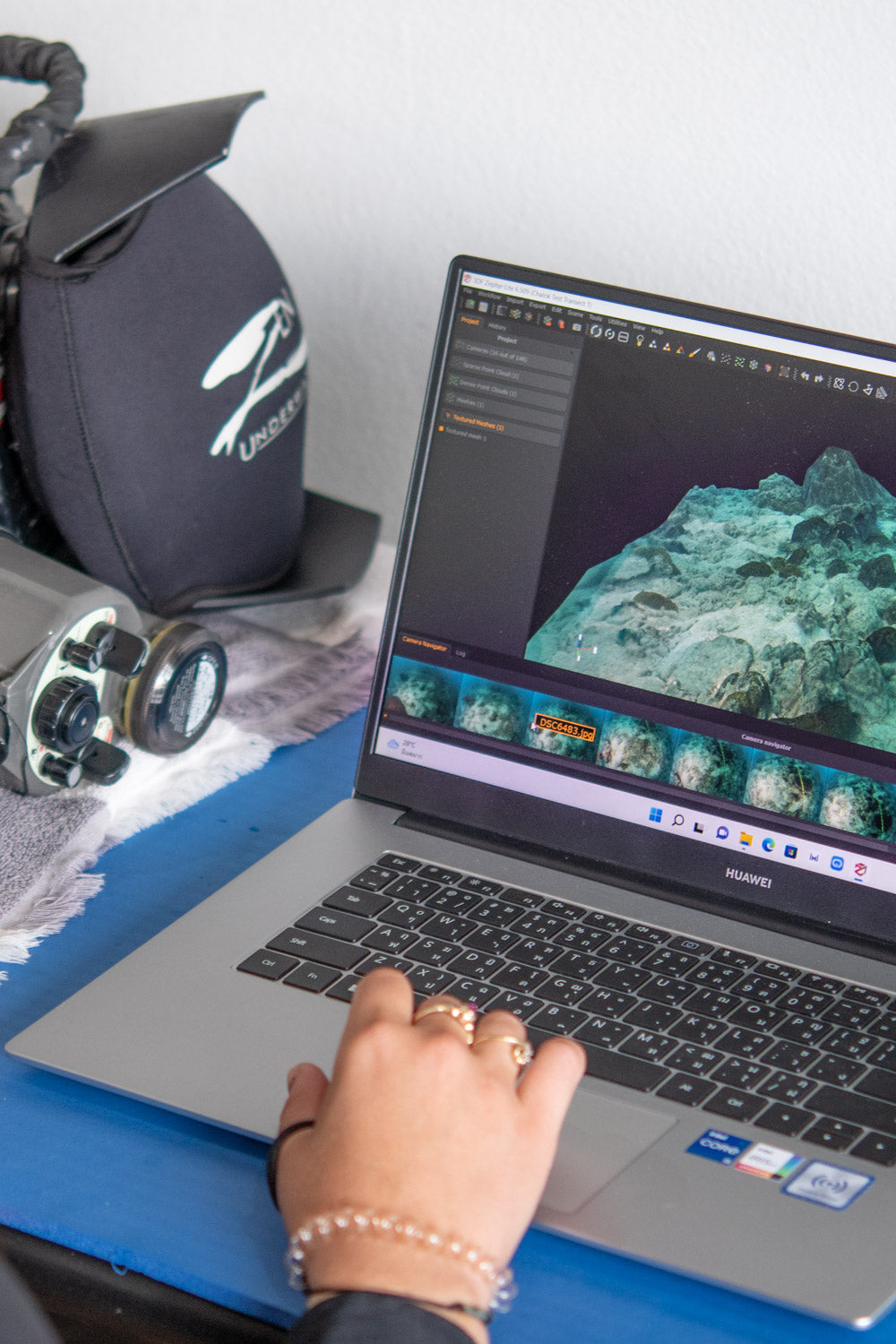
Digital 3D Modelling of Coral Reefs
Through the application of advanced photogrammetry methods, Global Reef are producing 3D models of coral reefs, reef structures, and artificial reefs.
By creating these 3D models on a recurring basis, historical records are created, allowing for long term research and monitoring of a variety of aspects of coral reef heath. Future research questions will have the ability to incorporate historical data from coral reefs, allowing trends, processes and developments to be identified by travelling ‘back in time’. This is critical for developing our knowledge and understanding of threats subject to reef ecosystems, and will allow early intervention and conservation efforts to be delivered in the future.
In addition, these models are shedding light on vital habitat traits that can help to inform the planning and optimization of future artificial reef deployments. By assessing structural complexity of different coral and artificial reef sites, the team aim to investigate the value of structural complexity to different reef inhabitants such as associated fish and invertebrates.
Global Reef offers digital 3D models, supported by empirical data gathered in situ, to scientists and institutions across the world. This has created the possibility for individuals to apply their research questions to coral reefs, without the need to visit them. This therefore significantly contributes to the overall Global Reef mission: ‘To connect a global audience with the marine world… anywhere and everywhere’!

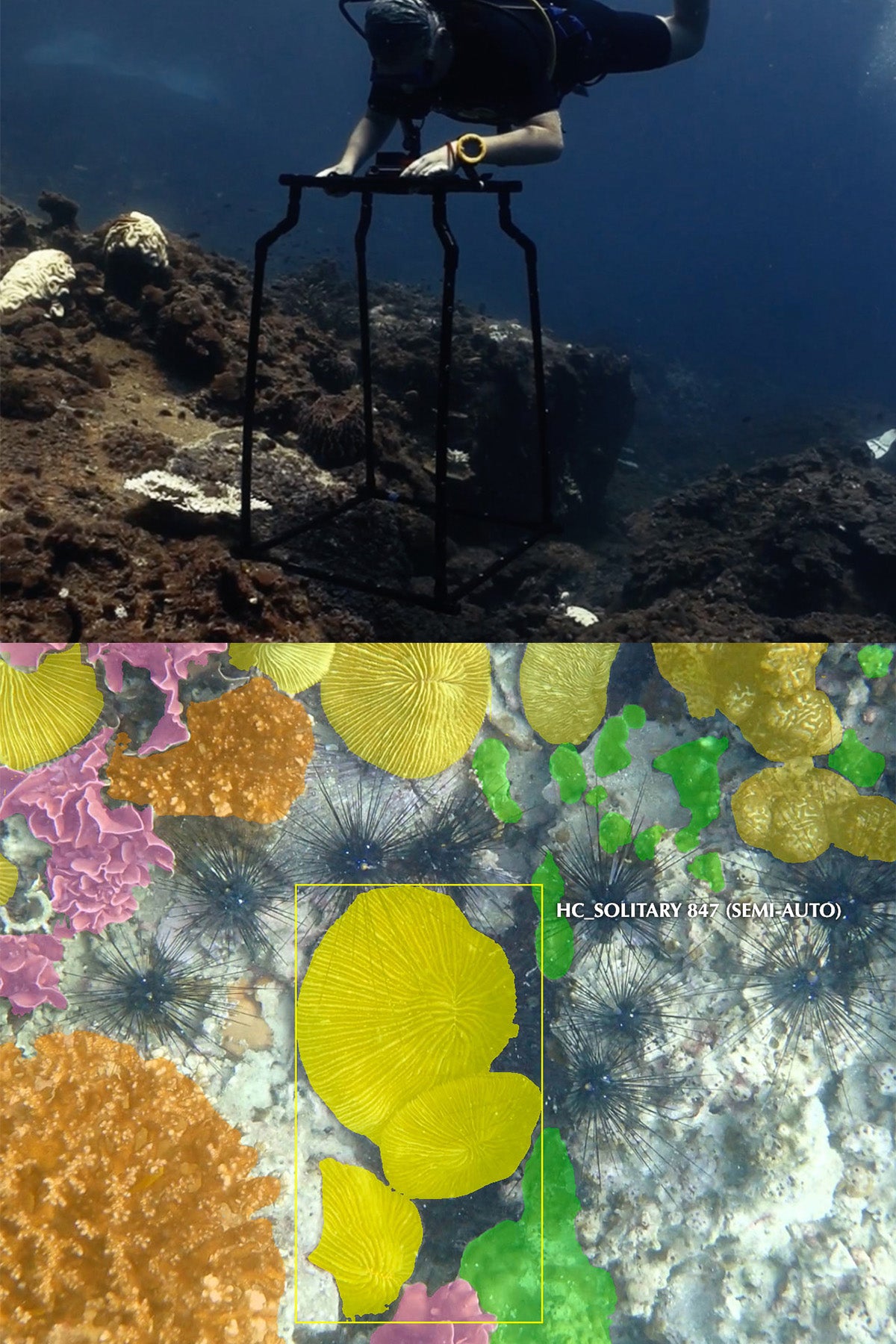
AI-Powered Coral Reef Monitoring
Global Reef is at the forefront of technological innovation in marine research and conservation, with a pioneering project to develop an AI model for rapid reef health assessments. This cutting-edge initiative harnesses machine learning to revolutionise the way coral reef ecosystems are monitored.
The AI model is designed to analyse imagery collected from fixed photo quadrats. These images of reef substrates are scanned by the model to segment, identify, and quantify hard coral cover with exceptional precision. Beyond this, the AI tool is also being developed to identify different coral morphologies, calculating diversity indices, and estimating their relative percentage cover on a reef.
The AI tool dramatically reduces the time required to analyse coral reef data, overcoming a significant bottleneck that causes difficulties utilising large datsets. Our first version of ‘ReefSense” enables researchers to process extensive datasets far more quickly than traditional manual methods; rapidly calculating hard coral cover at a high level of precision. The efficiency of the AI model allows for much larger datasets to be collected and analysed, offering insights across entire reefs rather than being limited to smaller sample areas.
This project represents a major step forward in marine research and exemplifies Global Reef’s commitment to leveraging innovation for the protection and restoration of coral reefs.

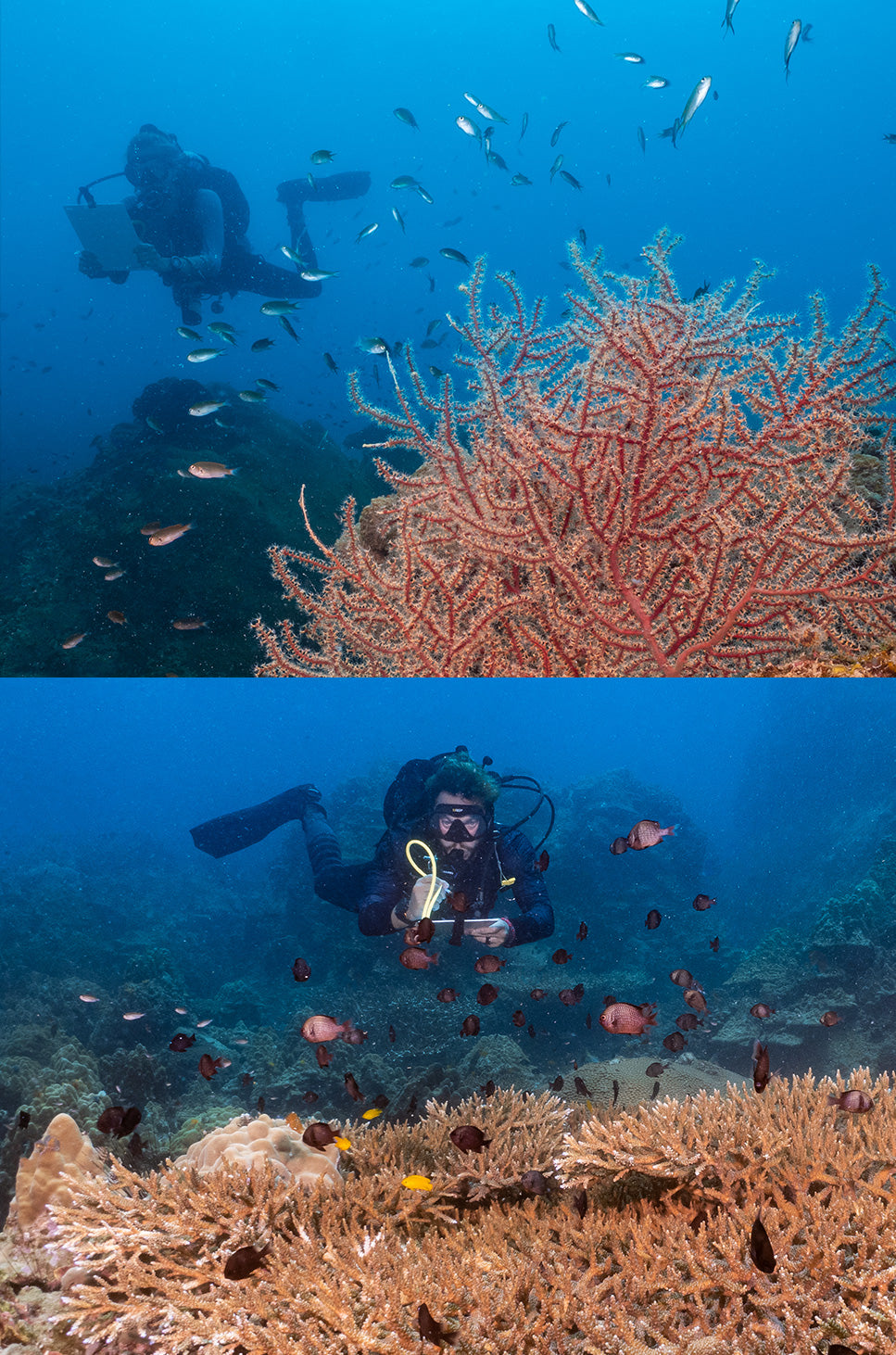
Monitoring of Marine Functional Groups
Each organism within any ecosystem has a specific ecological niche (role, job or function) which they occupy. As multiple niches are occupied by a diverse range of organisms, this ensures the entire ecosystem remains balanced and healthy.
By identifying the roles of marine organisms living on the reef, organisms with similar roles can be grouped together, forming 'functional groups' (e.g. herbivores, detritivores, mid trophic predators, apex predators etc.).
Global Reef has established ongoing monitoring programs for reef-associated functional groups. This allows identification of relative changes to these groups, as well as the potential effects these changes have had on other elements of the reef-ecosystem. In doing so, Global Reef is modelling the interactions between functional groups, assessing the relative impacts of different functional groups on reef health, and identifying key changes that may pose threats to local reefs.


